The earliest known bullock riding photo from
Warwick Rodeo, taken in 1931, shows how big and aggressive the bullocks of the era were.
In 1929, when the
Warwick Rodeo Bushmen's Carnival was advertised as the Australian Championships in Bullock Riding, Buckjumping and Cattle Drafting, there was no thought of anyone trying to ride a bull.
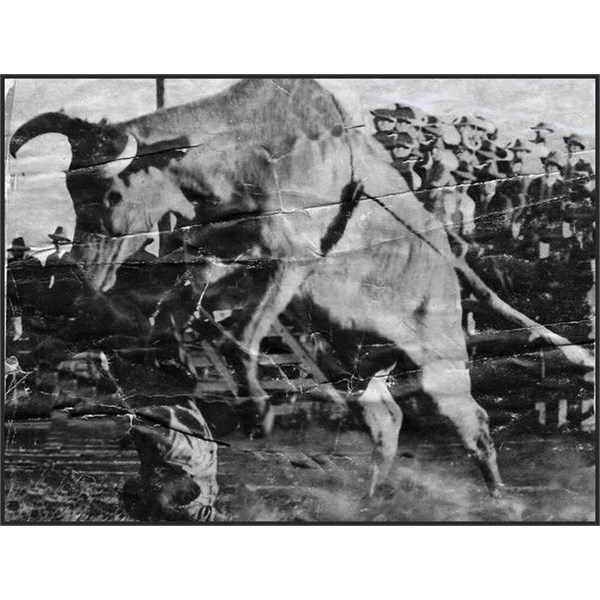
photo from Warwick Rodeo, taken in 1931
The thinking was firstly, bulls were too dangerous and difficult to handle in the yards, bulls from different properties would fight and besides that, no one was stupid enough to risk their lives in such a life-threatening occupation.
The first bull riding competition in Australia was in 1954 and called the World Brahma Bull Riding Championships and was held near
Townsville.
The first or qualifying round was held riding big strong bullocks sourced from the local area and then came the final on these untried and slightly mad "brahma" bulls.
Hessian was hung around the arena and every effort was made to ensure the bulls did not escape the grounds - no one was sure what was going to happen.
Eventually, the top 10 qualifiers gathered at the back of the chutes, a draw was held and all started taking stock of what they'd let themselves in for.
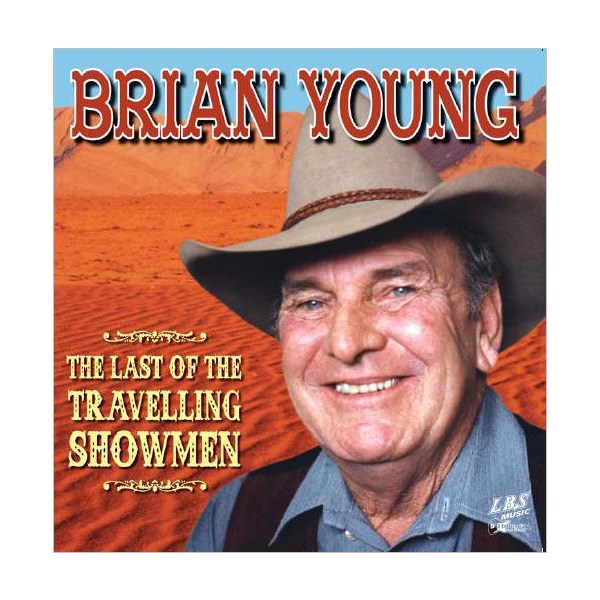
Brian Young Record sleeve
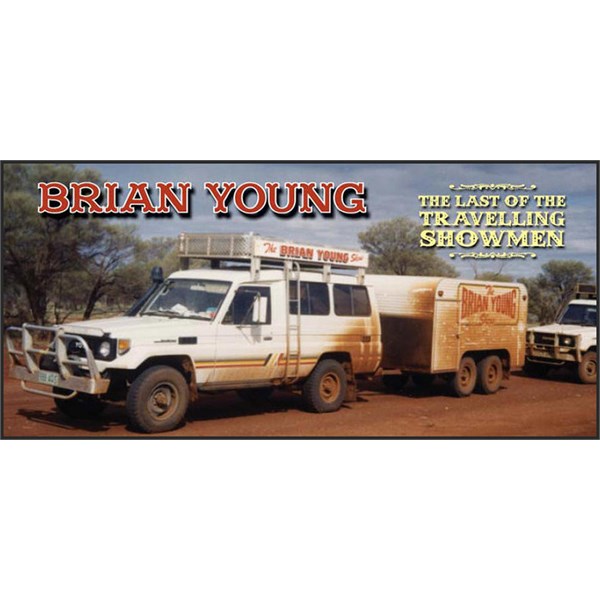
Brian Young's tour vehicle
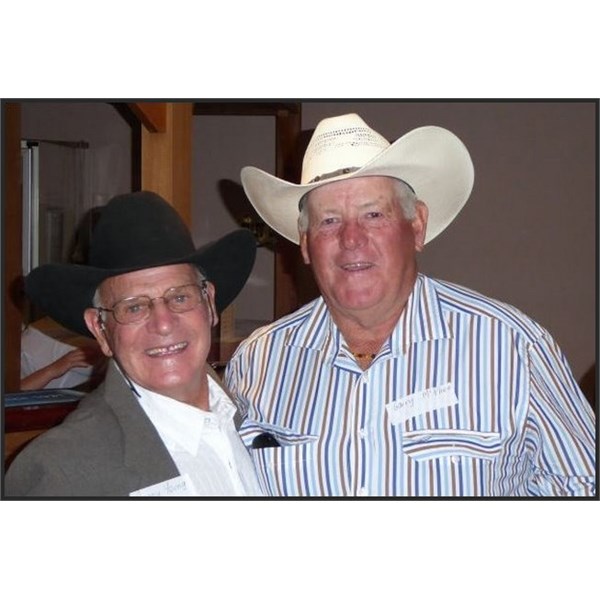
Bonny Young and Garry McPhee
Brian
Young, older brother of the famous all-around champion of the 1950s and '60s, Bonny
Young, and a wonderful country singer/songwriter later in life, was the leading qualifier and was therefore last out and although many valiant attempts were made to ride time, all were bucked off.
So, when all was said and done, no one made time on the first bull ride in Australia but Brian
Young became the World Champion Brahma Bull Rider, courtesy of his higher score in qualifying.
It was not until the mid-1960s bull riding started to become a regular part of rodeo programs and bulls started to be organised into teams by some of the early stock contractors, mainly to stop trouble in the yards both before and after the rodeo.
The bullocks used in early rodeo in Australia and overseas were not the bullocks we see in the paddocks or sales today.
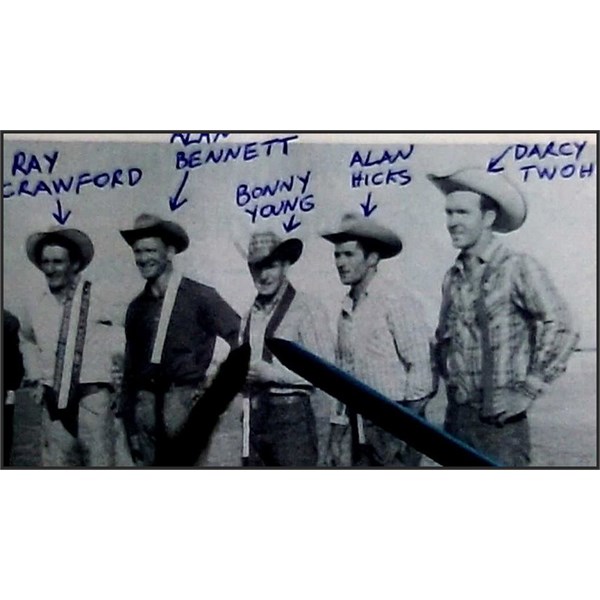
Know your past ARRA rodeo champs (Australia, 1960's
It was not uncommon to have bucking bullocks aged seven or eight years with huge horns being brought in for the rodeos.
Many had not seen man since they were marked at about six months of age and turned out.
De-horning was virtually unheard of and every breed then had the dreaded "stickers" as part of their everyday equipment.
These bullocks knew their way around, knew exactly where the tips of their horns were and were almost as strong as a bull of the same size.
Is it any wonder many of the old riders still refer to it as "bull" riding.
Buckjump competitions near
Warwick were recorded as long ago as 1857 at Canning Downs, Queensland's first pastoral run, only 3km across the
Condamine River from the rodeo grounds.
Back then, the buckjump competition as recorded in the local press of the time related how George Leslie, the owner of Canning Downs Station, had boasted how good his "breaker", Scotsman Rory McLeod, was.
His boast caught the ear of R.C. Haley, a squatter from the
Brisbane Valley, who also had land in the Burnett district.
Haley wagered that his horse breaker, a Mexican, could outride McLeod, "any day you like".
Leslie was quick to accept the challenge, the wager of £50 ($100) a side was agreed to. In 1857, this was equivalent to about a year's wage.
The competition took place at Canning Downs, the horse chosen for the challenge was the "very wild and savage
grey sired by the man killer, Vagrant".
When news spread of the challenge, people came from every corner of the wider region just to be there.
An official draw took place in front of the assembly and as a result, the Mexican was first into the saddle.
The unknown scribe who wrote for the local newspaper appears to have been a McLeod supporter; he merely recorded the Mexican as having been thrown from the
grey.
As McLeod was about to climb on board the
grey, the article then continued:
"The
grey's blood was up now. He used every trick he knew and had tried and invented a few more, but he just couldn't shift the leech (McLeod) on his back.
"He sunfished, spun, changed gait, propped, sucked back, jarred, but it was of no use."
An obviously delighted Leslie then presented the
grey horse to the victorious McLeod before heading off to the
homestead to socialise and to collect the wager from Haley.
The very first recorded rodeo events at
Warwick took place at the 1906 Show, but it was not until the Show Society owned its own grounds that official rodeo records were taken in 1929.
Before then, the
Warwick Show was held at Queen's Park on the northern edge of town beside the
Condamine River.
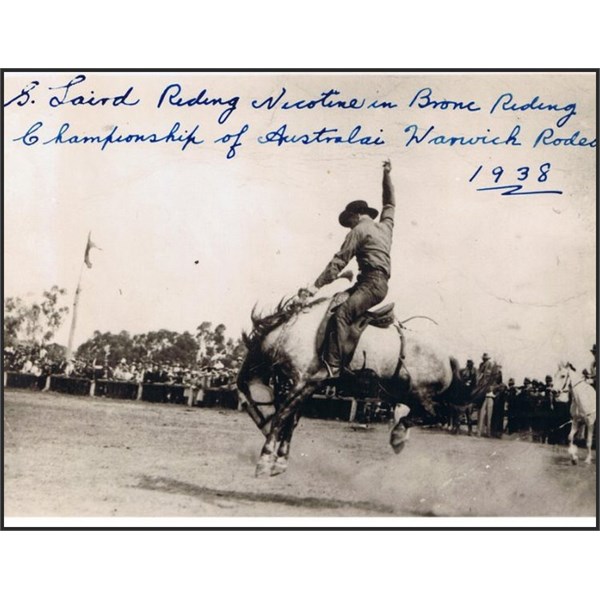
Steve Laird on Nicotine at Warwick 1938
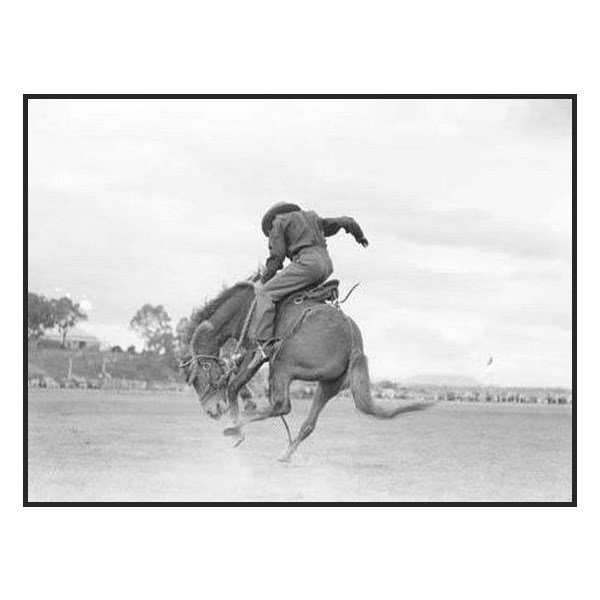
Steve Laird - Warwick Rodeo 1949
The organising committee of the time, the
Darling Downs Horticultural and Agricultural Association,
Warwick, (DDH&AAW) under the leadership of J.H.S Barnes Esq. of Canning Downs, decided 1929 was a clean start on the "New Showgrounds" and all official records date from then.
In the years leading up to 1926, relations between the DDH&AAW and the Shire Council had become rather strained.
The show committee wanted more say over the grounds, the facilities and amenities, many of which it had built and paid for however the council was not prepared to give members all they wanted.
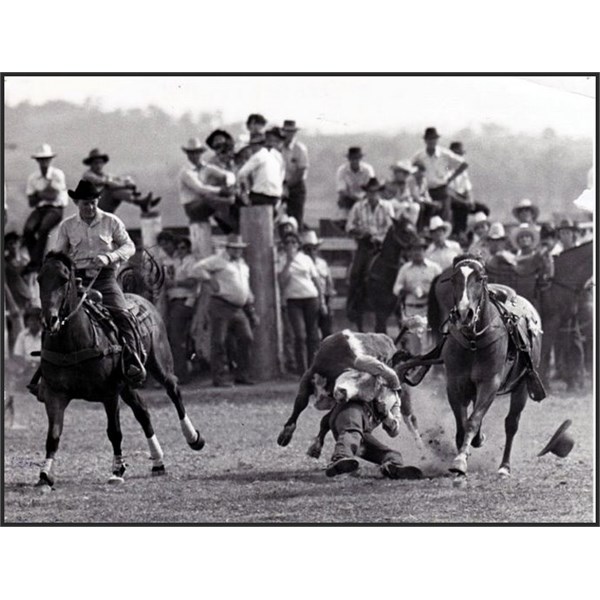
Gary McPhee at the Warwick Rodeo. 1978
It appears a referendum was held by the council to assess the opinion of ratepayers as to who should control the
showgrounds - and the council won.
This did not go down
well with the DDH&AAW, who immediately set about looking for an alternative venue where they alone had control.
The show committee was shortly afterwards donated a piece of land on the southern outskirts of town.
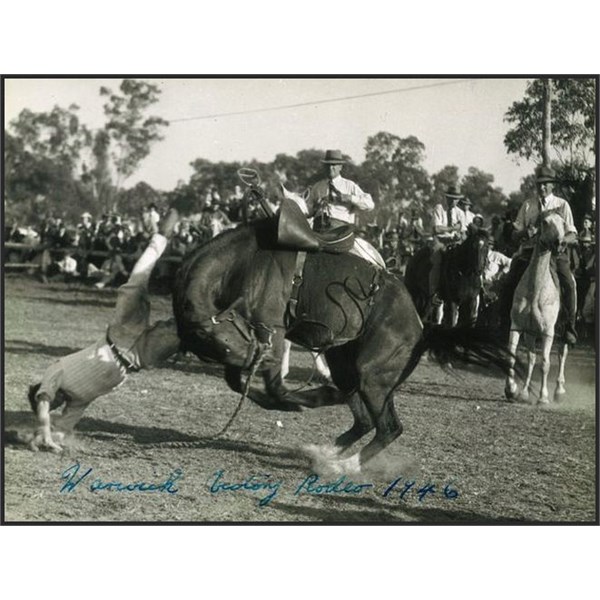
The first official rodeo after World War II, The Victory Rodeo at Warwick 1946,
The land wasn't perfect - it had a small
hill, some deep black soil and a creek right through the middle but it was all the show committee had and so they made the best of it.
Here they could run a show on their own land without council interference.
Following the success of their new venture, the committee decided it was worth the risk of holding a separate, standalone rodeo the following year, 1929.
The events held at the first rodeo in 1929, then called the
Warwick Rodeo Bushman's Carnival, included the Bullock Riding Championships of Australia with prizemoney of £11 ($22) and a cup, the Buckjumping Championship of Australia with prizemoney of £16 ($32) and a trophy, Bullock Throwing, Trick Riding, Flag Races, Grand Parade of Mounted Stockmen, Best Type of Stockhorse and the popular Roman Race.
In 1931, a special gold cup was made for the winner of the open campdrafting competition at
Warwick Rodeo in honour of the then Governor of Queensland, Sir
John Goodwin, who made the presentation.
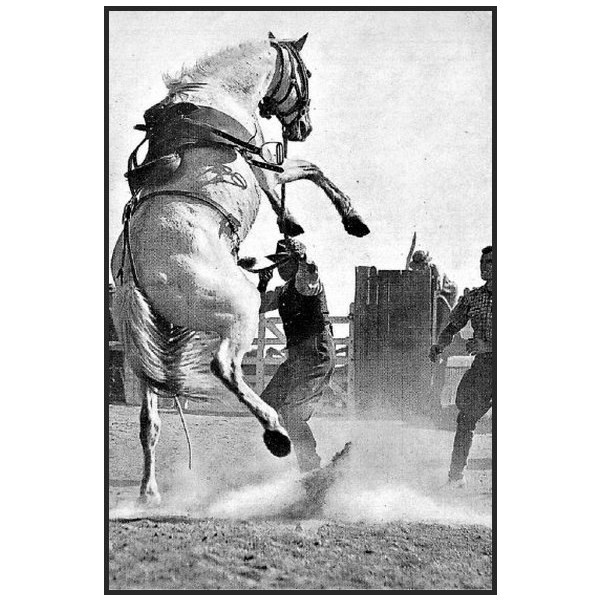
The infamous horse of the Warwick Rodeo, Arrawidgee (Grey Ghost) in 1936.
From that day to this, the
Warwick Gold Cup is the
pinnacle of campdraft competition in Australia, the most prized possession of those who have won it since.
It is known now as the "
Melbourne Cup" of campdrafting, with more riders and more prizemoney than any other campdraft in Australia. The
Warwick Rodeo and Campdraft are still held on the same grounds, it is one of only three privately owned
showgrounds in Queensland.
In 1987, a further 20 acres on the southern side of the grounds was purchased to better cater for competitors and patrons and more land is used on the eastern end courtesy of some wonderful neighbours.